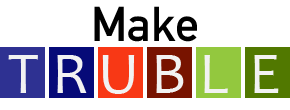Sampling Distributions and Null Distributions: two swirl lessons in R
Author(s): Rachel Hartnett
Oklahoma State University
1506 total view(s), 1968 download(s)
Distributions.swc(SWC | 136 KB)
Lesson plan and implementation notes_Hartnett_null distributions.pdf(PDF | 81 KB)
Lesson Plan and implementation notes_Hartnett_sampling distributions.pdf(PDF | 92 KB)
- http://whitlockschluter.zoology.ubc.ca/r-code/rcode06
- http://whitlockschluter.zoology.ubc.ca/r-code/rcode04
- License terms
Description
These two complementary lessons are designed to reinforce introductory lessons to sampling distributions and hypothesis testing using null distributions. The sampling distribution lesson visualizes sampling distributions for students and goes over the properties of a sampling distribution. The null distribution lesson shows how null distributions are a specific type of sampling distribution, identify key parameters in making a null distribution, and connect key concepts: 1) a test statistic falls under the null distribution while the p-level quantifies the probability of this test statistic occurring under the null distribution; 2) you can only make a statement about whether you reject or fail to reject the null distribution, because you are using a distribution generated by null expectations.
These lessons can be given together, but each can stand alone as a single lesson. These lessons use examples and code from Whitlock and Schulter's "The Analysis of Biological Data, 2nd ed." and can be particularly useful to instructors using this textbook. Although these lessons have not been implemented in the classroom, please see the lesson plan and implementation notes for additional consideration for implementing and assessing the lessons.
Cite this work
Researchers should cite this work as follows:
- Hartnett, R. (2019). Sampling Distributions and Null Distributions: two swirl lessons in R. Make Teaching with R in Undergraduate Biology Less Excruciating, QUBES Educational Resources. doi:10.25334/Q4KJ04
